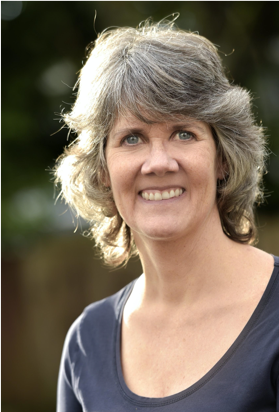
Hello! I’m Kylie Hutchinson (also known as @EvaluationMaven), an independent evaluation consultant with Community Solutions Planning & Evaluation.
Not all teaching of evaluation occurs in the classroom. In fact, I suspect that the bulk of evaluation capacity-building happens during one-day trainings held in the boardrooms and staff rooms of many non-profits. Over the years I’ve had the opportunity to teach evaluation everywhere from fancy hotel ballrooms to tiny non-profit staff kitchens, and once in a baseball dugout (which I don’t recommend). The following are reflections and tips I’ve gleaned for good teaching of evaluation in this environment.
Reflections and Hot Tips:
- Not everyone is excited to learn about
evaluation. In fact, many non-profit staff have had quite negative experiences
with evaluation being done to them
rather than with them.
Hot Tip! Start off any training by asking participants to shout out any words they free associate with the word “evaluation.” Then have a frank discussion about the source of these feelings and ways to address them moving forward. - I find it common for non-profit staff to be
skeptical that their program can actually be evaluated.
Hot Tip! Listen attentively and empathize about how it can indeed be challenging, rather than smoothly assuring them it’s possible. You’ll find participants will be more willing to listen to your ideas later on. - Many non-profit staff fear that an evaluation
will reduce their complex work into meaningless numbers and charts. I don’t
blame them, I would too.
Hot Tip! Briefly and informally introduce the concept of mixed methods early on in any training to reduce this anxiety. For example, I often provide a real-life example of an evaluation where non-profit staff were also interviewed for their views in addition to program clients. - Adults strongly want to know whether or not what
they are learning is directly applicable to their job.
Hot Tip! Get participants working as quickly as possible on an example from their own work area. This gives them an opportunity not only for practice and feedback, but also makes it immediately relevant. In my experience, non-profit staff want a little bit of theory and lots of real-life examples and opportunities to practice.
Rad Resource:
- Your own experience! People are hungry, hungry, hungry to learn from real life examples. Where better to find them than your own experience with evaluation? Everyone loves to hear a good story, and I bet you’ll enjoy sharing your evaluation adventures too.
The American Evaluation Association is celebrating TOE TIG Week with our colleagues in the Teaching of Evaluation Topical Interest Group. The contributions all this week to aea365 come from our TOE TIG members. Do you have questions, concerns, kudos, or content to extend this aea365 contribution? Please add them in the comments section for this post on the aea365 webpage so that we may enrich our community of practice. Would you like to submit an aea365 Tip? Please send a note of interest to aea365@eval.org. aea365 is sponsored by the American Evaluation Association and provides a Tip-a-Day by and for evaluators.

Thanks, kylie, you provided great tips!
Hi, kylie. Thanks for your Hot tips.
Thank you Kylie for your wonderful reflections. It would definitely help me as a teacher. Providing real life examples is the way to go! “Listen and empathize” yes that is the way to acknowledge our audience, always. “Practice and feedback” definitely cements the learning. Hopefully I could improve in my coaching days, thanks for the few tips that I will use in my lessons to sweep off my listeners.